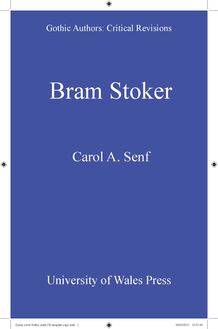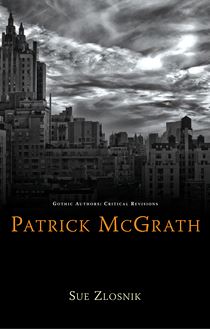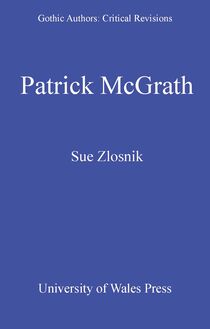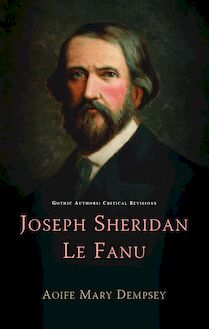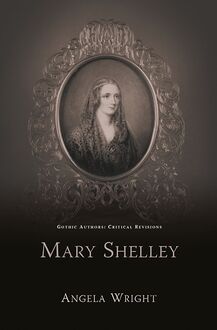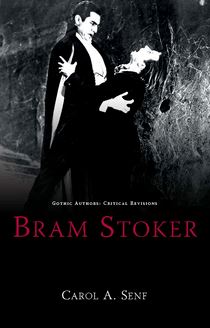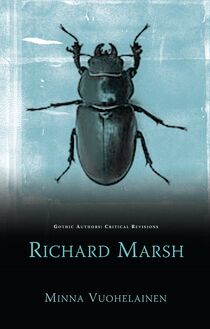-
 Univers
Univers
-
 Ebooks
Ebooks
-
 Livres audio
Livres audio
-
 Presse
Presse
-
 Podcasts
Podcasts
-
 BD
BD
-
 Documents
Documents
-
- Cours
- Révisions
- Ressources pédagogiques
- Sciences de l’éducation
- Manuels scolaires
- Langues
- Travaux de classe
- Annales de BEP
- Etudes supérieures
- Maternelle et primaire
- Fiches de lecture
- Orientation scolaire
- Méthodologie
- Corrigés de devoir
- Annales d’examens et concours
- Annales du bac
- Annales du brevet
- Rapports de stage
La lecture à portée de main
Vous pourrez modifier la taille du texte de cet ouvrage
Découvre YouScribe en t'inscrivant gratuitement
Je m'inscrisDécouvre YouScribe en t'inscrivant gratuitement
Je m'inscrisEn savoir plus
Vous pourrez modifier la taille du texte de cet ouvrage
En savoir plus

Description
Mary Shelley reappraises the significance of Frankenstein alongside other works by Shelley which could be considered to revise the significance and fluctuating meanings of ‘Gothic’ during the Romantic period. It offers scholarly, fresh readings of the 1818 and 1831 editions of Frankenstein, as well as chapters upon the fiction that Shelley composed in between both editions, and during the same decade as its second edition.
In its broader examination of Mary Shelley’s work, this study is the first of its kind within the field of Gothic studies. Alongside sustained explorations of Frankenstein, Matilda, Valperga and The Last Man, the volume Mary Shelley reappraises some of the shorter essays and tales that the author composed for contemporary magazines. Angela Wright argues that the time is now right for a re-examination of the extent to which Shelley participated in and redirected the Gothic tradition.
Mary Shelley: A Chronology
Introduction
Chapter One: Frankenstein
Chapter Two: Matilda
Chapter Three: Valperga
Chapter Four: ‘On Ghosts’ and The Last Man
Chapter Five: ‘Terror, Horror and Transformation’
Conclusion
Illustrations
Henry Fuseli. ‘The Nightmare’
Engraving of ‘Juliet’ from The Keepsake for 1831
Sujets
Informations
| Publié par | University of Wales Press |
| Date de parution | 15 janvier 2018 |
| Nombre de lectures | 0 |
| EAN13 | 9781783168484 |
| Langue | English |
Informations légales : prix de location à la page 0,1250€. Cette information est donnée uniquement à titre indicatif conformément à la législation en vigueur.
Extrait
MARY SHELLEY
SERIES PREFACE
Gothic Authors: Critical Revisions is dedicated to publishing innovative introductory guides to writers of the Gothic. The series explores how new critical approaches and perspectives can help us to recontextualize an author’s work in a way that is both accessible and informative. The series publishes work that is of interest to students of all levels and teachers of the literary Gothic and cultural history.
SERIES EDITORS
Andrew Smith, University of Sheffield
Benjamin Fisher, University of Mississippi
EDITORIAL BOARD
Kent Ljungquist, Worcester Polytechnic Institute, Massachusetts Richard Fusco, St Joseph’s University, Philadelphia
David Punter, University of Bristol
Angela Wright, University of Sheffield
Jerrold E. Hogle, University of Arizona
GOTHIC AUTHORS: CRITICAL REVISIONS
Mary Shelley
Angela Wright
© Angela Wright, 2018
All rights reserved. No part of this book may be reproduced in any material form (including photocopying or storing it in any medium by electronic means and whether or not transiently or incidentally to some other use of this publication) without the written permission of the copyright owner. Applications for the copyright owner’s written permission to reproduce any part of this publication should be addressed to the University of Wales Press, 10 Columbus Walk, Brigantine Place, Cardiff, CF10 4UP.
www.uwp.co.uk
British Library CIP Data
A catalogue record for this book is available from the British Library
ISBN (hardback) 978-1-78316-846-0
ISBN (paperback) 978-1-78683-173-6
eISBN 978-1-78316-848-4
The right of Angela Wright to be identified as author of this work has been asserted in accordance with sections 77 and 79 of the Copyright, Designs and Patents Act 1988.
Cover image: Portrait of Mary Shelley, posthumously painted watercolour on ivory by Reginald Easton (c.1857). Bodleian Library, University of Oxford.
For Jessica and Antonia Mathison
C ONTENTS
Acknowledgements
Mary Shelley: A Chronology
Introduction
1 Frankenstein, or the Modern Prometheus (1818)
2 Testimonial and Refusal in Matilda (1819)
3 Of Women, History and Romance in Valperga (1823)
4 ‘On Ghosts’ and The Last Man : Mourning, Melancholia and Transformational Terror
5 Terror, Horror and Transformation: The 1831 Edition of Frankenstein and the Short Stories for The Keepsake
Conclusion
Notes
Bibliography
Acknowledgements
The idea for a book which more fully appraised the literary career of Mary Wollstonecraft Shelley as an author working within the Gothic literary mode was first suggested to me around 2010. Due to other commitments and my own anxiety that I could not do justice to Mary Shelley, however, it has taken longer to write than first anticipated. My thanks for getting me beyond this creative impasse are due, first and foremost, to Sarah Lewis, my editor at the University of Wales Press, who has shown encouragement, patience and enthusiasm throughout the writing of the book, and secondly to the anonymous reader who has offered excellent and supportive advice. I also wish to thank my colleague Andy Smith, at the University of Sheffield, who first suggested the idea of this book to me. The book also profited from a period of research leave from the University of Sheffield, and I am grateful to my home department, the School of English, for granting this to me.
I derived considerable inspiration from a trip to the New York Public Library to examine some of Mary Wollstonecraft Shelley’s manuscripts in the Carl H. Pforzheimer Collection in 2011. I also wish to thank Dr Elizabeth Denlinger, the curator of this wonderful collection, who corresponded with me about my visit, laid out all of the manuscripts that I requested, and corresponded with me afterwards, consistently offering excellent support and advice. Holding the physical materials handled by Mary Shelley offered me considerable inspiration, and I have been able to make use of some of those materials in the course of my study. My thanks are also due to the British Academy for their financial support of my research trip by means of a Small Research Award.
The notion that we write books in isolation without advice or creative input from anyone else is one that Mary Shelley herself would have disputed. The same holds true for my academic work on her in this book; I am truly grateful for the warmth and encouragement of my colleagues at work, particularly Dr Anna Barton, Professor Joe Bray, Dr Madeleine Callaghan, Dr Hamish Mathison and Professor Andy Smith, who have offered advice, encouragement and feedback during this process. I am truly in your debt, dear colleagues. With Madeleine Callaghan, I also organised a conference during the Summer of 2016 to commemorate the Summer of 1816, and the fun, warmth, insight and generosity of our helpful colleagues, our graduate students and our delegates was truly inspirational. Over the years, I have taught the works of Mary Shelley many times at both undergraduate and graduate level. I am constantly delighted by the enthusiasm, insight and research that my students bring to her works. I thank my students for their continuing engagement with Mary Shelley.
I am also grateful to my friends Sarah Brown and Joy Turnbull who, without being asked, offered assistance with childcare as this manuscript approached its deadline. My family too has been a source of continual support to me. From afar, my parents Robert and Mary Wright have offered continual encouragement, as have my siblings Julia, Martin and Malcolm. My husband Hamish has allowed me time and space to complete this project, offering advice along the way. Our two wonderful daughters, Jessica and Antonia Mathison, have provided me with fun and inspiration, reminding me in their demands to laugh, smile and play. Their routines as young girls have insisted that I raise my nose from my books and take them to their various clubs and parties. This has been invaluable to me, more than they will ever know. In thankfulness for their presence in my life, I dedicate this book to Jessica and Antonia, hoping that they too will continue to write their own stories.
Angela Wright, Sheffield, 2016
Mary Shelley: A Chronology
1756
Birth of William Godwin
1759
Birth of Mary Wollstonecraft
1790
Commissioned by Joseph Johnson, Wollstonecraft publishes A Vindication of the Rights of Men in response to Edmund Burke’s letter Reflections on the Revolution in France
1792
Publication of Wollstonecraft’s Vindication of the Rights of Woman
1793
Publication of Godwin’s Enquiry Concerning Political Justice
1794
Publication of Godwin’s first novel, Things as They Are, or the Adventures of Caleb Williams ; birth of Fanny [Frances] Imlay, Wollstonecraft’s daughter by Gilbert Imlay
1797
Marriage of Mary Wollstonecraft to William Godwin (29 March); birth of Mary Wollstonecraft Godwin (later to become Mary Shelley) (30 August); death of Mary Wollstonecraft from puerperal fever (10 September)
1798
Godwin publishes the controversially received Memoir of the Author of a Vindication of the Rights of Woman and edition of Wollstonecraft’s Posthumous Works , including her unfinished novel The Wrongs of Woman, or Maria
1801
Marriage of William Godwin to Mary Jane Clairmont who, with her two children, Charles and Mary Jane (later to rename herself Claire), moves in to live with Godwin, Mary, and Fanny Imlay in Somers Town (near London, 21 December)
1803
Birth of William Godwin Jr, only child of Godwin and Mary Jane Clairmont
1808
Mary Shelley’s first poem, ‘Mounseer Nongtongpaw’, published by M. J. Godwin and Co., her father’s company
1812
Mary travels to Dundee to live with the Baxter family until the following June. On a brief return visit home in November, for the first time Mary meets Percy Bysshe Shelley, recently married to Harriet Westbrook; he has become a frequent visitor to her father’s home (November)
1814
Mary returns to London; meets Percy Shelley again and a relationship develops between the two, who often conduct their secret meetings in St Pancras Churchyard, where Mary Wollstonecraft is buried (May and June); elopes with Percy to the Continent, with her stepsister Claire Clairmont (28 July); they travel in France, Germany, Switzerland and Holland (July and August); purchase green notebook that is to become their collective journal where they record what they have read and what they have visited; both return to England (September), where Percy Shelley hides from creditors, avoiding arrest for debt
1815
Mary gives birth to her first daughter (22 February), who dies (6 March); move to Bishopsgate, Windsor (August)
1816
Birth of son William (24 January); second trip to the Continent with Percy Shelley and Claire Clairmont (who is pregnant with Byron’s child); meeting with Lord Byron and John Polidori in Geneva at the Villa Diodati (May); genesis of Frankenstein in the ghost story competition at the Villa Diodati (June); visit to Chamonix (July); return to England (September); suicide of Mary’s half-sister Fanny Imlay (9 October); suicide of Percy’s wife, Harriet Westbrook, who is found in the Serpentine five days later (10 December); marriage of Mary Wollstonecraft Godwin and Percy Shelley (30 December)
1817
Birth of Claire Clairmont’s daughter Alba by Byron (later to be renamed Allegra) (12 January); Percy Shelley loses custody of his two children by Harriet Westbrook; move to Marlow (March); Frankenstein completed (14 May); birth of daughter Clara (2 September); publication of History of a Six Weeks’ Tour , a collaboration with Percy Shelley (T. Hookham and C. and J. Ollier; December)
1818
Publication of Frankenstein; or, The Modern Prometheus (Lackington, Hughes, Harding, Mayor and Jones; January); departure for Italy with Shelley, Claire and Alba (March); settle in Bagna di Luca (June); move to Este; death of Clara (September); move to Rome (November); move to Naples (Dece
-
 Univers
Univers
-
 Ebooks
Ebooks
-
 Livres audio
Livres audio
-
 Presse
Presse
-
 Podcasts
Podcasts
-
 BD
BD
-
 Documents
Documents
-
Jeunesse
-
Littérature
-
Ressources professionnelles
-
Santé et bien-être
-
Savoirs
-
Education
-
Loisirs et hobbies
-
Art, musique et cinéma
-
Actualité et débat de société
-
Jeunesse
-
Littérature
-
Ressources professionnelles
-
Santé et bien-être
-
Savoirs
-
Education
-
Loisirs et hobbies
-
Art, musique et cinéma
-
Actualité et débat de société
-
Actualités
-
Lifestyle
-
Presse jeunesse
-
Presse professionnelle
-
Pratique
-
Presse sportive
-
Presse internationale
-
Culture & Médias
-
Action et Aventures
-
Science-fiction et Fantasy
-
Société
-
Jeunesse
-
Littérature
-
Ressources professionnelles
-
Santé et bien-être
-
Savoirs
-
Education
-
Loisirs et hobbies
-
Art, musique et cinéma
-
Actualité et débat de société
- Cours
- Révisions
- Ressources pédagogiques
- Sciences de l’éducation
- Manuels scolaires
- Langues
- Travaux de classe
- Annales de BEP
- Etudes supérieures
- Maternelle et primaire
- Fiches de lecture
- Orientation scolaire
- Méthodologie
- Corrigés de devoir
- Annales d’examens et concours
- Annales du bac
- Annales du brevet
- Rapports de stage
